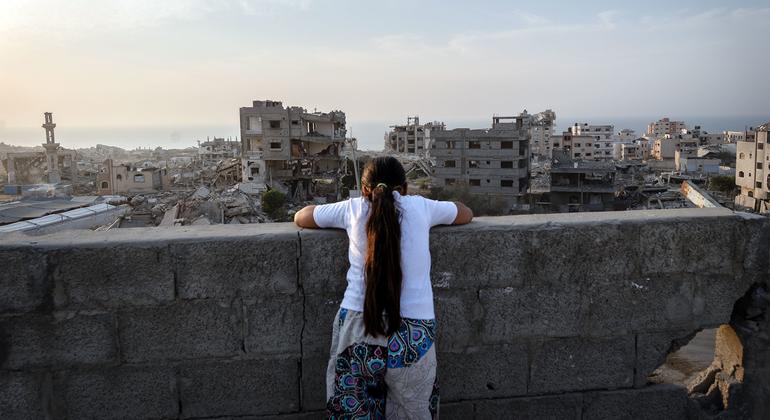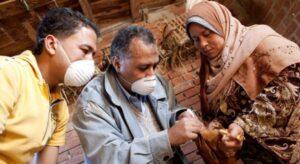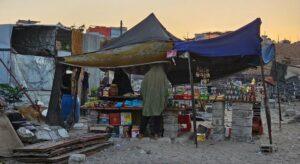Issuing a warning that children’s sense of stability and security has been eroded as essential everyday services have collapsed, humanitarians insist that young Gazans will need “sustained, long-term efforts to recover”.
According to assessments of child safety partners carried out in September, shared by the United Nations Office for the Coordination of Humanitarian Affairs (OCHA), 93 percent exhibited aggressive behavior and 90 percent were violent towards younger children.
Sadness and withdrawal are almost as common (86 percent), along with disturbed sleep (79 percent) and widespread refusal to study (69 percent).
Violence every day
While a fragile ceasefire holds, the deadly violence and insecurity has not ended completely, with Israeli military attacks near or east of the so-called “Yellow Line”.
This is where the Israeli military remains stationed, making up more than 50 percent of the Gaza Strip, OCHA said.
In an update, the United Nations aid office noted that access to the sea remains prohibited; it also cited reports that Palestinian fishermen continue to be detained at sea by Israeli forces.
“In areas outside the ‘yellow line’…daily detonations of residential buildings continue to be reported, and access to humanitarian assets, public infrastructure and agricultural land remains limited or completely blocked“, said the OCHA update.
One million still homeless
Out of Gaza’s 2.1 million inhabitants, approximately one million live in 862 displacement sites today.
More than half of these sites are in the southernmost area of Khan Younis, 264 are in Deir al Balah, 180 are in Gaza and northern Gaza governorate, and eight are in Rafah.
Many camps are overcrowded, increasing the dangers for girls and children – especially those with disabilities, who are exposed to violence, neglect and dangerous access to water, sanitation and hygiene (WASH) facilities.
The United Nations’ Palestinian relief agency, UNRWA, said about 75,000 people live in about 100 of its designated shelters and surrounding areas.
Increasing anxiety
UN aid partners providing assistance to young people report suffering increased anxiety, behavioral changes and growing concern over the persistent lack of safe spaces.
In the four weeks since an agreed pause in fighting, humanitarian partners have provided child protection services to more than 132,000 across the Gaza Strip. This includes nearly 1,600 children with disabilities and 45,000 caregivers, OCHA said.
The assistance has included individual psychological consultations, group sessions, stress management activities, recreational psychosocial support and referrals for further help.
The goal is to reach more than 100,000 children every month to meet the needs of nearly one million children in the Gaza Strip.
The development came as Israeli authorities announced the reopening of the Zikim crossing after an eight-week closure.
The crossing connects Israel and northern Gaza and will reopen for humanitarian cargo, OCHA said. In recent weeks, the UN has repaired the road leading to Zikim inside Gaza in preparation for the reopening and is now carrying out final checks – including for potential explosive hazards – to enable the resumption of cargo collection.



